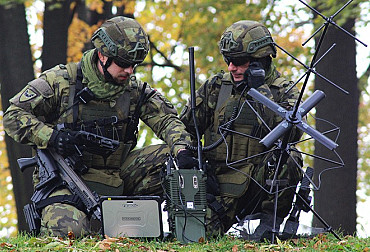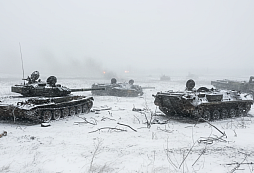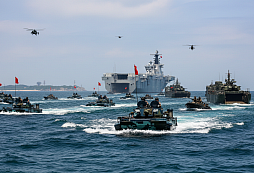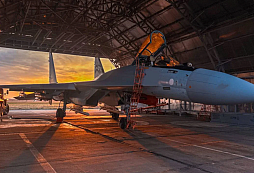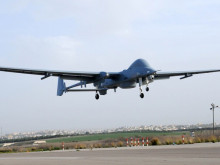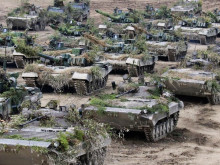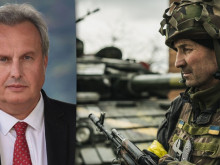Instructor of the Armed Forces: Why it is necessary to practice close combat as part of Czech Army training
As a Protect Israeli Security Solutions international instructor he has the opportunity to train with the best in the world. That is why he was invited to join the world organization of military combat skills instructors, as an international instructor for military training and training of the armed forces. He is also currently training members of our Army, Police and other branches. In addition to the above components, our respondent also has extensive experience with various trainings and cooperation with foreign, now often legendary, units and individuals, so we asked him a few questions.
1) ) Why is it necessary to practice close combat within the training of the Czech Army and the armed forces in general?
The goal of the armed forces is a general task: to defend, protect, fight, secure, etc. Each of these forces has its specific tasks and missions. And in the exercise of their profession, in most cases, these members are armed. In order for these people to be able to respond adequately to emergencies within their profession and operational task, it is not always enough to rely only on their functional weapons as such, but they should also master the so-called close combat. Both against an unarmed attacker and an armed attacker.
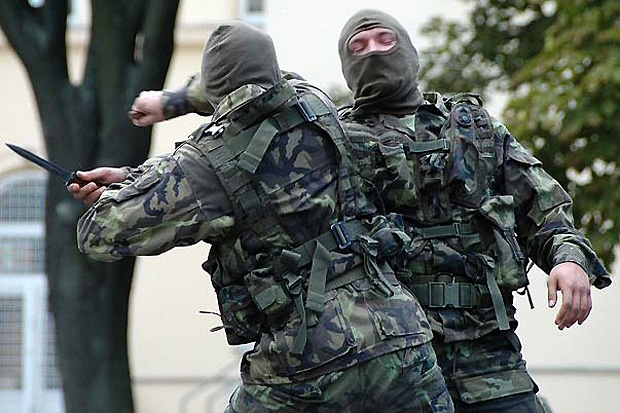 Picture: Musado, which is based on Korean combat techniques, was introduced by the Czech Army in 1993. Specifically, its variant designed exclusively for the training of police and military units - Military Combat System (MCS). | Ministry of Defense of the Czech Republic
Picture: Musado, which is based on Korean combat techniques, was introduced by the Czech Army in 1993. Specifically, its variant designed exclusively for the training of police and military units - Military Combat System (MCS). | Ministry of Defense of the Czech Republic
It is not a sporting performance, such as a martial arts competition, but it is a matter of surviving a crisis situation. These are without rules, regardless of weight and the number of attackers can be arbitrary. In close combat, emphasis is placed on fulfilling a task or achieving a goal pursued by the performance of a job (police, army, prison administration, customs administration, VIP protection teams, security agencies, etc.) In order for training to make sense to members of these corps, close combat training must be blended together with shooting and tactical training. In the beginning, close combat can be trained separately, but over time, these things must be trained together. Otherwise, it all lacks meaning.
 Picture: From close combat training | Protect Academy Czech / CC BY-NC-ND
Picture: From close combat training | Protect Academy Czech / CC BY-NC-ND
2) We have the established MUSADO MCS (Military Combat System) self-defense system, what is used elsewhere in the world?
The world is full of martial arts, sports, self-defense and combat systems. People call it differently. Each country has its own specifics. There is a lot of it and everyone, of course, defends his own, as his treasure. For example, the Russians have Sambo, the Thais have Thaibox, the Koreans have Taekwon-Do, we have Musado, the Israelis have several systems.
Many countries in the world are taking over the self-defense systems of other countries, as I have already said, the number of systems is really high. Some specific units hire world experts from other units and states, and in some places former special unit instructors travel around the world and train / train local units.
3) Is the MUSADO MCS system efficient?
At the time when Musado started in the Army, it was more about the fact that there were only a few martial arts, such as judo, karate, Taekwon-Do. We also started with all sorts of Kung fu and kickboxing. I don't know whether Musado was trained by anyone in the world at the time, maybe just a unit in Germany. In my opinion, Musado was not even tested in any fight at the time. The teaching of Musado techniques began, if I'm not mistaken, sometime in 1993. It was a classic controlled sparring with defensive techniques against an armed and unarmed attacker. Mostly, the fighters taught it from the aforementioned martial arts. When we did the shows then, it was one big show for the audience. Screaming a lot, flying a lot in the air, breaking everything possible, lighting the breaking boards up, cutting and breaking bottles on the head. People were wearing camouflage and balaclavas and it looked very action and rough.

Picture: From close combat training | Protect Academy Czech / CC BY-NC-ND
However, that time has passed, one cannot stop development. Today, I believe that this system has missed the boat since a long time. There used to be nothing else, but today Musado seems inappropriate and pointless to me. Soldiers spend the same amount of time training close combat and usually don't get much out of it. In my opinion, no one today can really explain to them why it should be done this way, how the biomechanics of the human body and all the important things around it work at all. In my opinion, the quality of instructors is low today and that is why their students take it as a necessary evil that they must fulfill. On the other hand, it is better to do at least something than nothing.
4) How is "civil self-defense" different from that practiced in the armed forces?
Civilian self-defense, if we call it that, has its rules. To anticipate critical situations, to avoid, to run away when there is space and time, and in the event of an unavoidable situation, to use anything for one's own defense under the law of the Czech Republic. It is also a follow-up activity after managing the situation.
The armed forces are mostly armed, perform some operational and tactical task and usually work in a team. Their interventions and procedures are very specific. They often cannot run away from a given situation, the lives of their colleagues and often civilians usually depend on their reaction. Unlike civilians, members of the armed forces have to deal with the worst criminals and terrorists, who usually arrest these people directly and in some cases even eliminate them in given situations.
 Picture: From close combat training | Protect Academy Czech / CC BY-NC-ND
Picture: From close combat training | Protect Academy Czech / CC BY-NC-ND
5) Is close combat training sufficient at present and how can it be improved?
As I said, close combat training has reserves in our country, but it is certainly possible to move on and on. But it occurs to me that there is no will. And when it is, someone important always stops it. At present, in my opinion, the current training of close combat in the armed forces is insufficient. And you can see it in the news every day when you look at some work interventions. When you hear information about how close combat training is conducted in the Army, you will find that the situation of the whole spectrum of the armed forces is really quite miserable.
The training could certainly be improved by a different approach and thinking in general. That's where I think it should start. People do not have the right information and do not use modern training aids. There are a few small units that try to keep up with the times and they try far more than others, but even there, many things could be improved. You could also work far more with more experienced teams from abroad, who have many years of experience and daily experience at the highest level.
I recently trained close combat instructors from an unnamed unit, and it was clear to the men how they wanted to absorb new, more functional information and skills. We had everything we needed for the training, so everyone could experience what the difference is in what they have been training so far and how it is possible to do it differently. They practiced day and night and really under pressure and with all the equipment. This unit has great potential.
6) What do you think needs to be taken into account the most when training close combat in order to be as effective as possible in real attack conditions?
The basis of everything is to "suck in" information from the most experienced people in the world, who use and practice close combat almost every day, and when something in close combat ceases to work, they immediately start to change their training.
The armed forces do not have as much time as you need to train martial arts. They need things simple and effective, things tried and proven from practical use.
Today, the most important thing is absolutely not taken into account in training, and that is the biomechanics of the human body. Without it, training is just a classic practiced sparring of two exercisers. During the training, I met many great racers of all styles, but when they went to the ground (with all the equipment, for example), the style did not work for them. The same thing happened in defense against weapons. With a model of a weapon and a static attacker, almost everyone can handle the defense, but against an electric knife or FX weapons (weapons that use training ammunition, which can be likened to paintball) and an active attacker, that's something else entirely.
 Picture: From close combat training | Protect Academy Czech / CC BY-NC-ND
Picture: From close combat training | Protect Academy Czech / CC BY-NC-ND
Few units use the aforementioned weapons and equipment to train close combat, which would show them that what they have been training for so many years is actually inoperable. Whether it is protective equipment, FX weapons, RAM, shocknife, etc. It is also important to use cameras in training and subsequent video analysis. As for the armed forces, few people train in equipment, which is then available for real deployment or intervention. Night training is also important, all of which takes close combat training to a completely different level.
When I was preparing the concept of close combat training for a certain unit that was interested in a new perspective on close combat, all of the above was included in these documents. During the training of their instructors, I then applied everything to their training, everything was practically tested. Both at night and during the day. And all in full gear and armament. Now the Municipal Police has shown interest in training and the overall concept.
7) Should the ability to use a weapon as a "strike means" be practiced in shooting training or in "other employment"?
It should definitely be practiced. But whether it really is, each training instructor must reach into his own conscience. According to my information, this is rather rare. This issue must be practiced both in shooting training and in close combat training. Everything is related to everything. Melee combat must be practiced in shooting and melee combat in close combat. If this is not the case, the training of members of any component then lacks the conceptuality and complexity.
8) Are these procedures practiced in the Czech Army as well?
I have been dealing with military training since 1994, but I have never seen this training in practice, except for some sets with the legendary „scythe“ (Sa-58 V assault rifle). I don't even have any information that anyone is practicing today. I trained reconnaissance, police and specials. And the units that went abroad. I have prepared a concept of close combat for Special Forces units, which are probably most interested in training and moving close combat and all these skills to a completely different level than other units.
9) In what situations is the general use of a firearm as a "strike means" possible?
It is always a contact distance with the attacker, terrorist, perpetrator, no matter what we call this person. A soldier with an assault rifle, for example at a checkpoint, or at a CQB (CQB or Close Quarters Battle is a method of combat used by armies and special forces in enclosed spaces and at short distances.) should use the weapon as a "means of strike" in any attack at a very short distance, in the event of a weapon failure, when the attacker is close and there is no time to rectify the failure, simply in a situation where it is not possible to shoot immediately. There are, of course, more of those model situations. It can be applied with both short and long firearms.

Picture: From CQB training | Protect Academy Czech / CC BY-NC-ND
10) Although this is probably a secondary criterion, is the possibility of using it as an "strike means" considered in the selection of a weapon for the armed forces?
I do not think so. Because if you look at the flashlight at the pistol, for example, in most cases it extends beyond the barrel of the weapon, and when you strike with such pistol, the flashlight can be damaged and thus possibly disable the weapon for use in low light conditions. Some types of pistols have a breech and body design designed so that when you hit the face, a part of the skin and flesh is torn out, causing you to have a defect in the weapon, when you have a missed breech and thus have a broken weapon and endanger yourself, your colleague, or the people you have to save. During training, this is tested, for example, on the pig's head or other parts of the pig. I also use pig meat for knife fighting training. The result is immediately visible and you have an example of what it would probably look like on the human body. The pig is, of course, dead and then grilled after training (laughs). Just so that no one thinks that I use live animals for training.
11) To what extent is the possibility of effective use of the weapon as a "strike means" dependent on its carry? How should a weapon be ideally carried?
How to carry a gun? I usually come across a dogmatic interpretation - a single point strap. And you will all have it the same! However, every use of a weapon has a much broader connection with when, where and when I use a weapon. If you go moving, I'll have a gun like that. When I operate in a city or in buildings, it's a little different, and when I'm guarding a place somewhere, it's a little different. When I drive in a vehicle, it's similar. So there are really many options and variants of carry depending on the situation.
Members of the armed forces should always evaluate what is better for them at the moment. As they say "dogma kills". In my opinion, personally, choosing a two-point strap and setting the length correctly is the best choice. Then you have to try absolutely everything as you go to the event. From uncomfortable shooting positions, sprints and climbing obstacles, to close combat, handcuffing people, repelling attacks with a knife, switching to a backup weapon with movement, etc. There are many other situations that can occur. The person then finds out for himself what suits him best and how to adjust the weapon strap in the given situation.
















